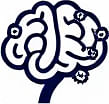Engaging Decision Aids with Mental Models
 by Max Miller
by Max Miller
Mental models serve as essential tools for improving decision-making processes. By applying these frameworks, individuals can enhance cognitive clarity and achieve better outcomes in personal and professional settings. This article explores practical ways to use mental models effectively.

Mental models are cognitive frameworks that shape how we interpret and respond to situations. They help in organizing thoughts and making choices more effectively. For instance, the first principles approach breaks down problems to their basic elements, allowing for clearer decisions.
In practice, mental models can transform everyday choices. Consider the confirmation bias, which influences how people seek information that aligns with their beliefs. Recognizing this can lead to more balanced evaluations in business or personal life.
One useful mental model is the inversion technique. This involves thinking about what could go wrong before proceeding. By anticipating potential pitfalls, individuals can avoid common errors in planning projects or strategies.
Another key concept is the circle of competence, which focuses on areas where one has expertise. Staying within this circle ensures decisions are based on solid knowledge, reducing risks in professional environments.
To apply these models, start with simple exercises. For example, when facing a decision, list out options and their consequences. This method, often called a decision tree, visualizes paths and outcomes.
In business contexts, mental models aid strategic thinking. The SWOT analysis, though basic, examines strengths, weaknesses, opportunities, and threats. It provides a structured way to assess situations without overcomplicating the process.
Professionals in psychology note that mental models also support cognitive development. By regularly using these tools, people can build habits that foster better problem-solving skills over time.
For lifelong learners, exploring various models opens new perspectives. The availability heuristic, for example, shows how recent events can overly influence judgments. Awareness of this helps in making more rational choices.
Practical tips include journaling decisions and reviewing them later. This reflection process reinforces learning and refines mental models for future use.
In teams, sharing mental models promotes collaboration. When group members align on common frameworks, discussions become more productive and decisions more cohesive.
Consider a scenario in cognitive development: a student preparing for exams might use the spacing effect, spreading study sessions over time. This model improves retention and reduces last-minute stress.
Business strategies benefit from models like the 80/20 rule, where a small percentage of efforts yield most results. Applying this focuses resources on high-impact activities.
Mental models are not static; they evolve with experience. As individuals encounter new challenges, adapting these frameworks keeps decision-making sharp.
In personal life, the sunk cost fallacy warns against continuing investments based on past efforts. Letting go of unviable paths leads to wiser choices.
For curious minds, reading about historical figures who used mental models can inspire application. Think of scientists who relied on logical reasoning to advance discoveries.
Ultimately, integrating mental models into daily routines builds resilience. They turn abstract ideas into actionable steps, enhancing overall decision quality.
To summarize, mental models offer a practical path to better decisions. By incorporating them thoughtfully, anyone can improve cognitive abilities and achieve meaningful progress.
